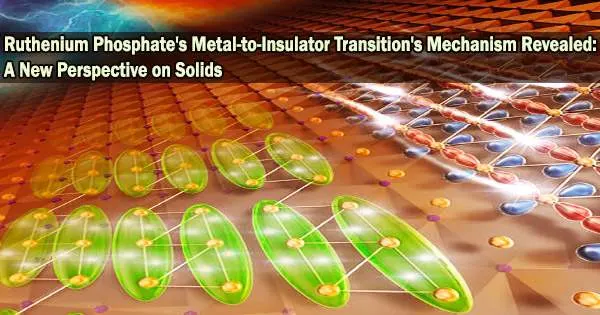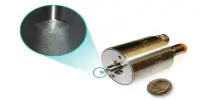A team from Nagoya University in Japan has found a previously unidentified variety of ruthenium phosphide that, when cooled, has a unique arrangement of atoms and electrons. The paradox of a metal being an insulator at low temperatures yet a conductor at high temperatures may be solved by this.
The platinum group of metals includes the rare metal ruthenium. Because of its stability and conductivity, ruthenium phosphide (RuP) is frequently employed as a material.
At room temperature, RuP behaves like a metal and conducts electricity. However, it was found in 2011 that when chilled below 0°C, it develops an insulator and has a higher electrical resistance.
The transitional point where a metal transitions from its metallic phase at high temperatures to its insulating phase at lower temperatures is known as the metal-insulator transition (MIT). However, there is debate concerning the way in which RuP makes this transition.
“It has been discussed for over 10 years, but there is no consensus on the mechanism,” explains lead author, Associate Professor Daigorou Hirai. “The origin of the transition too has also been a matter of great interest, especially since superconductivity appears when this transition is suppressed.”
Using a method known as synchrotron radiation X-ray diffraction, a team led by Hirai, including Associate Professor Naoyuki Katayama, Student Keita Kojima, and other members of the Graduate School of Engineering at Nagoya University, investigated the characteristics and crystal structure of RuP at low temperatures to clarify the MIT mechanism. In the Journal of the American Chemical Society, they published their findings.
The team found that as the solid transformed from a metal to an insulator, the uniform spacing between ruthenium moleculesatoms, which was observed at higher temperatures, was altered.
The new type of molecule is composed of three atoms connected by four electrons, whereas most molecules found in solids so far have been composed of two atoms connected by two electrons. Molecules come in a wide variety of shapes and bonding types, but there have been few known variations in solids. Molecular orbitals found in RuP are important in that they show that there is diversity in molecular formation, even in solids.
Daigorou Hirai
At low temperatures, the crystal develops a shape known as a linear trimer, which resembles a garden lattice and is made up of several triangles joined in a straight row with their highest points facing up and down.
RuP trimers, a new kind of molecule from those typically found in solids, develop chemical bonds as they transition into the low-temperature phase by integrating four electrons. This could provide an answer to the conundrum of how a metal can behave as an insulator at low temperatures but as a conductor at high temperatures.
Since electrons are necessary for the flow of electricity, their capture to create these triplet molecules obstructs that flow.
“We discovered that ruthenium switches from a metal to an insulator by connecting three molecules atoms in a straight line and capturing electrons,” Hirai explains. “The new type of molecule is composed of three atoms connected by four electrons, whereas most molecules found in solids so far have been composed of two atoms connected by two electrons. Molecules come in a wide variety of shapes and bonding types, but there have been few known variations in solids. Molecular orbitals found in RuP are important in that they show that there is diversity in molecular formation, even in solids.”
Sensors and switching mechanisms can benefit from the creation of molecules in materials, which changes their electrical and optical properties. However, the team’s discoveries broaden that line of inquiry.
“The discovery of various types of molecules can enable more rapid changes in properties, faster responses, and molecular control using magnetic, electric, and stress fields,” Hirai explains.
“The formation of the molecular orbital significantly changes electrical conductivity, which can be used as a temperature sensor. Also, since the formation of molecular orbitals also significantly changes light transmittance, we are also considering smart windows that change light transmittance depending on temperature.”
This research was supported by Grant-in-Aid for Scientific Research (JP20H01858, JP22H01178) from the Japan Society for the Promotion of Science and by Grant-in-Aid for Scientific Research on Innovative Areas (Research Area Proposal Type) “Control and Function of Quantum Liquid Crystals” (JP22H04462).
















